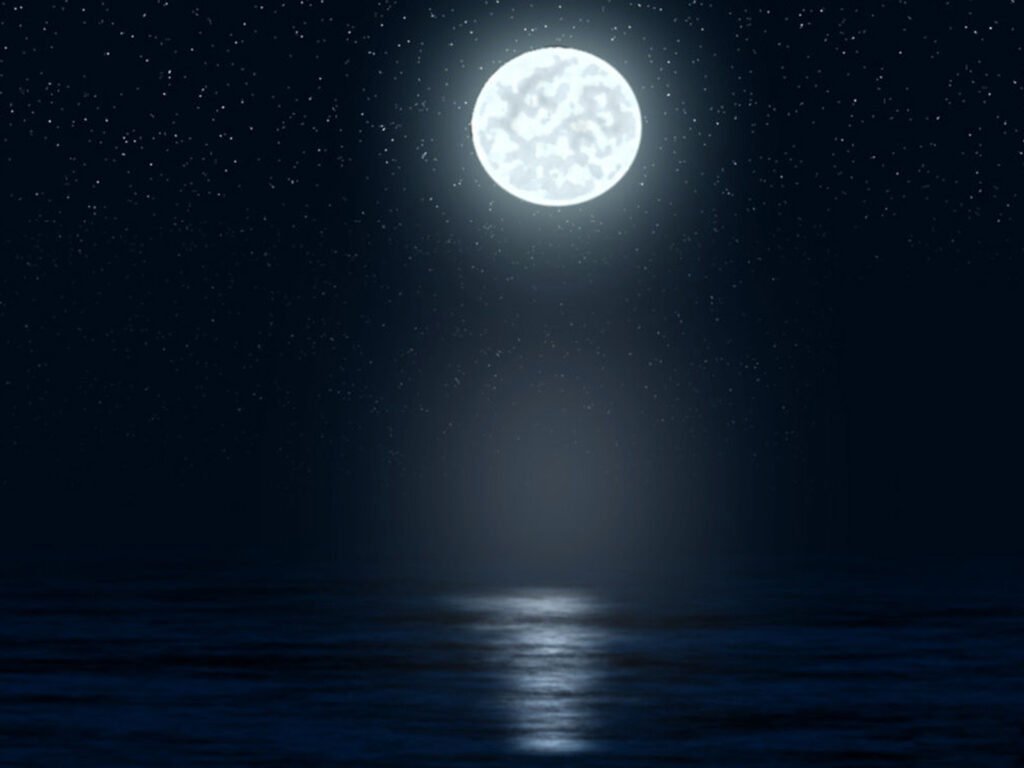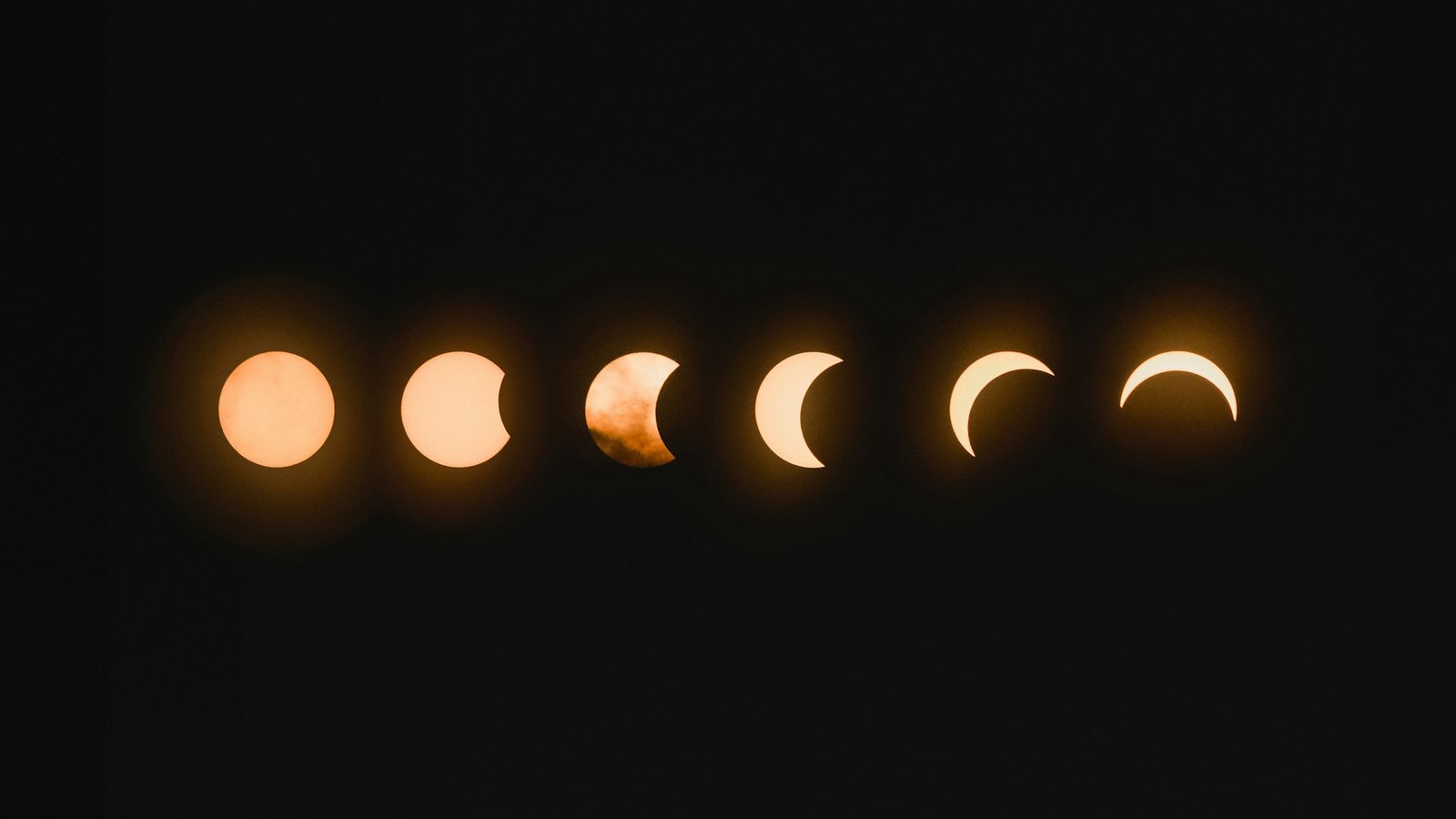Exploring the mystery behind Moon’s light
Why does the Moon shine? Have you ever wondered why does the Moon shine? Let’s explore the science, myths, and cultural significance behind the Moon’s brightness. Learn about lunar phases, reflections, and more in this illuminating article.
The Moon’s surface reflects sunlight, creating its glow; it reflects only 3 to 12 percent of the sunlight that hits it. It lacks its own light source and bounces off the sun’s rays toward Earth. The Moon’s surface reflects sunlight because it’s made up of a rocky material called regolith, which bounces off the sun’s rays and makes the Moon appear bright to us on Earth.
The reason the Moon shines is because sunlight strikes its surface and is reflected. Albedo, an essential feature of the Moon’s surface that controls how much light it reflects, is mainly composed of rocks and dust. The Moon reflects only 12% of the incoming sunlight, which is not very much, but it’s still enough to make it appear bright in our night sky. Its rough landscape, full of craters and different kinds of materials, scatters and absorbs light, which changes how well this reflection works.

We see the Moon’s phases as it revolves around the Earth, each one resulting from looking at different areas of its sunny side. The Moon may exhibit striking changes in hue or darkness during a lunar eclipse due to Earth’s shadow. Through its phases and brilliance, the Moon’s reflected quality not only guides the behavior of nighttime organisms on Earth but also enhances human culture and scientific understanding.
The Science Behind It
Lunar Surface Reflection
One of the primary reasons behind the Moon’s brightness is its surface’s reflective nature. Just like Earth, the Moon doesn’t produce its own light; rather, it reflects sunlight. This phenomenon, known as lunar reflection, is why we see the Moon illuminated in the night sky.
Sunlight and the Moon
The Sun plays a crucial role in the Moon’s radiance. As the Sun’s rays hit the Moon’s surface, they bounce off and scatter, creating the luminous glow we observe from Earth. This interaction between sunlight and the lunar surface is what makes the Moon shine.
Moon Phases Explained
The Moon’s appearance changes throughout its monthly orbit around Earth, leading to different phases. From the waxing crescent to the full moon and the waning crescent, these phases occur due to the varying angles at which sunlight strikes the Moon, altering its visibility.
Factors Affecting Moon’s Brightness
Factors Affecting Moon’s Brightness
Atmospheric Conditions
The clarity of Earth’s atmosphere significantly impacts how brightly we perceive the Moon. On clear, cloudless nights, the Moon appears more radiant, whereas atmospheric conditions like pollution or dust can dim its glow.
Distance from Earth
The Moon’s distance from Earth also influences its brightness. During its elliptical orbit, the Moon’s proximity to our planet varies, affecting how much sunlight it reflects. When the Moon is closer to Earth, it appears larger and brighter—a phenomenon known as the supermoon.
Presence of Clouds
Cloud cover can obstruct the Moon’s light, reducing its apparent brightness. Conversely, thin clouds or atmospheric phenomena like lunar halos can enhance the Moon’s luminosity, creating stunning visual effects.
Earth’s Shadow
During a lunar eclipse, Earth casts its shadow onto the Moon, temporarily dimming its shine. This celestial alignment occurs when the Earth, Sun, and Moon align, with Earth positioned between the Sun and the Moon, resulting in a captivating astronomical event.
The difference between sun light and moon light
| Aspect | Sunlight | Moonlight |
|---|---|---|
| Source | Direct emission from the Sun. | Reflected sunlight from the Moon’s surface. |
| Intensity | Intense, can illuminate Earth’s surface to support life. | Much weaker, as only a small fraction of sunlight is reflected back to Earth. |
| Nature | Vital for life and energy. | Softer and less intense, influences biological rhythms and behaviors. |
| Polarization | Not polarized. | Slightly linearly polarized. |
| Effect on Temperature | Causes significant temperature variations on Earth’s surface. | Has no significant effect on Earth’s temperature. |
| Biological Impact | Directly affects circadian rhythms, plant photosynthesis, and animal behavior. | Indirect effects through reflected light, may influence nocturnal activities. |
This table outlines the fundamental differences between sunlight and moonlight based on their source, intensity, nature, polarization, effect on temperature, and biological impact.
Historical and Cultural Significance
Moon in Mythology

Across cultures worldwide, the Moon holds profound symbolic meaning. From ancient mythologies depicting lunar deities to folklore and legends, the Moon has been revered as a celestial entity influencing tides, fertility, and the passage of time.
Moon in Human History
Throughout history, the Moon has served as a navigational aid, calendar marker, and muse for art and literature. Human civilizations have observed, worshipped, and documented lunar phenomena, leaving an indelible mark on cultural heritage.
Modern Understanding
NASA’s Contributions
In modern times, space exploration has deepened our understanding of lunar science. Organizations like NASA have conducted missions to study the Moon’s composition, surface features, and gravitational influence, unraveling its mysteries.
Recent Discoveries
Recent scientific discoveries, such as water molecules detected on the Moon’s surface and the potential for lunar colonization, highlight the ongoing relevance and fascination with Earth’s natural satellite.
FAQs
Why does the Moon shine during the day?
The Moon reflects sunlight, which is why it glows throughout the day just like it does at night. The Moon is like a large mirror that reflects the light from the Sun; it does not produce light on its own. The Sun is so bright during the day that it obscures the stars and turns the sky blue. Nonetheless, we can still see the Moon because it is sufficiently close and brilliant. It functions similarly to how a bright flashlight seems in a well-lit space. The Moon orbits the Earth, and occasionally during the day it is in the exact location in the sky where the sunlight catches it, allowing us to see it shine.
Can the Moon shine without the Sun?
No, the Moon cannot shine without the Sun. The Moon does not have its own light. It shines because it reflects the sunlight that hits it. If there were no Sun, the Moon would be completely dark. It’s like when you use a mirror to reflect sunlight; if there is no light, the mirror won’t shine. The moon is similar, it needs the sun light to visible to us.
How does the Moon reflect sunlight?
The surface of the Moon, which is covered in a coating of rock and dust known as regolith, is used to reflect sunlight. A portion of the light that strikes the Moon from the sun is reflected back into space by the regolith. What we perceive when we gaze at the Moon from Earth is this reflected light. The Moon’s surface only reflects 3 to 12 percent of the sunlight that strikes it, making it a relatively unreflective surface1. The Moon shines brightly in our sky even with this little reflection since it is quite close to Earth and there is no air in space to disperse the light.
What causes the Moon to change its brightness?
There are various reasons why the Moon’s brightness varies. The Moon Phases, which give us the waxing and waning appearances, are the main contributing component. As the Moon orbits Earth, we view varying amounts of its light side. The moon is brightest at its full phase and nearly invisible during the new moon. Earthshine, or sunlight reflecting off the planet, is another element that somewhat illuminates the dark side of the moon. Another factor is the Moon’s distance from Earth; the closer it is to the planet, the brighter it looks. Lastly, the Moon’s apparent brightness or darkness can be affected by Earth’s atmospheric conditions, such as dust or clouds. The dynamic brightness of the Moon that we see in the night sky is the result of several components working together.
Why does the Moon sometimes appear larger?
There are two primary causes for why the Moon occasionally appears larger than usual. The first is the Supermoon phenomenon, which is the appearance of a much larger and brighter full moon during its orbital closest to Earth. The Moon Illusion is the second explanation. Because of this optical illusion, the Moon appears larger when it is close to the horizon than when it is far above the sky. The Moon isn’t getting bigger physically; rather, it’s how our minds see it in relation to the horizonal objects of Earth. Therefore, although the Moon’s real size doesn’t change, how we perceive it does.
Could the Moon produce light by itself?
No, light cannot be produced by the Moon on its own. It reflects the sunshine that strikes it, which is why it sparkles. The Moon is essentially a large rock in space, and much like a rock on Earth is not seen without external light, the Moon too need light from an external source to be visible. The Sun is the source of light in this instance. The reason the Moon appears to be shining in the sky is because sunlight strikes the Moon’s surface, bounces off, and part of that light makes its way to Earth.
In conclusion, the Moon’s luminosity is a fascinating interplay of scientific principles, cultural significance, and historical intrigue. Whether admired for its beauty, studied for its scientific value, or revered for its mythological symbolism, the Moon continues to shine brightly in the human imagination.

